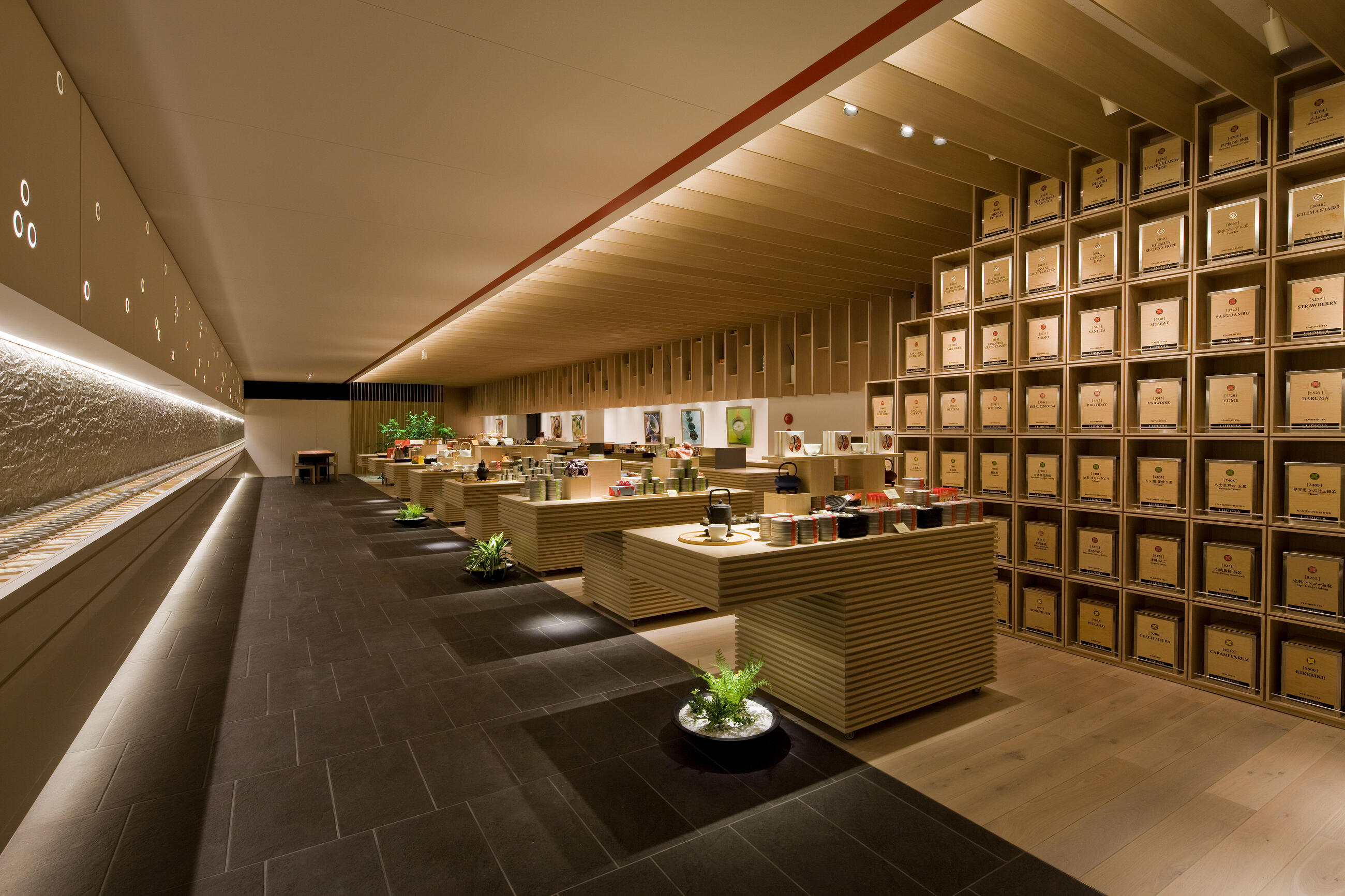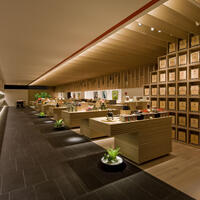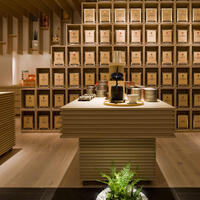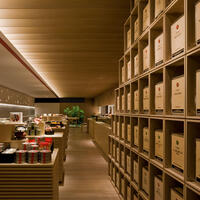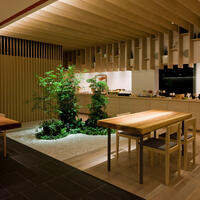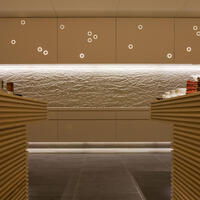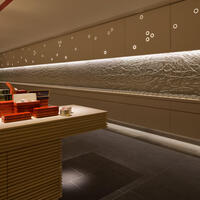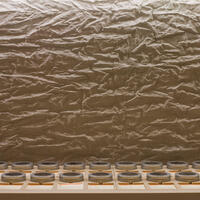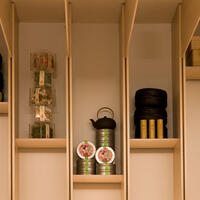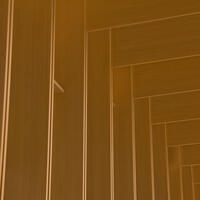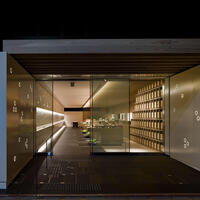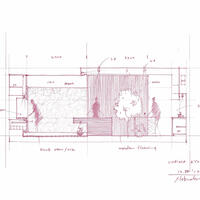LUPICIA Kyoto Teramachi-Sanjo Store
530 Tenshojimaecho, Nakagyo ward, Kyoto, JAPAN
| Architect | Furuya Nobuaki+NASCA |
|---|---|
| Usage | Shop (Interior) |
| Size | 1F |
| Area | 231㎡ |
| Completion | 2010.11 |
| Publishing | Shouten kenchiku 2011.9 |
Kyoto is a well-known ancient capital as well as a bustling city to which many young people, both Japanese and foreigners, flock. You can see traditional Kyoto intertwined with modernity especially when you visit the Teramachi-Sanjo area. This shop was designed to reflect such dynamics of the city. In this shop, customers can pick up and smell tea leaves made not only in Japan but from all around the world. The design of the shop was conceived as the base concept for the Sendai branch of LUPICIA, which opened in 2012, as well as other prospective branches.
The building, which extended far back, imitates the architectural style of ‘machiya', which are the traditional houses of Kyoto. Simplified versions of typical ‘machiya’ features were incorporated in the design of this 'shop'/'attraction', such as long and narrow yards, tiny gardens that collect sunlight, lattices and stairs that look like piled up boxes. The cans of tea leaves were lined up along the left wall to visually represent the numerous varieties of teas this shop sells. The cans are arranged in a long line with a seamless crumpled stainless steel panel reflecting an ‘obi’ of light behind them. Above the display of cans is a hanging wall which can be used for shelving. The circular lights which are the same size as the tea packages are fitted onto the wall in a 'hifumi-ishi' pattern. We would like to adopt this arrangement of lights as one of a trademarks of LUPICIA shops. The ‘shop’ space, where the customers actually buy tea is on the right hand side facing the narrow yard. The display shelves and cashiers are laid out to look like the counter of traditional Japanese shops. The customers can receive messages from the shop and feel the four seasons owing to the arrangements of teas boxes and display shelves. In the tiny garden situated in the inner part of the shop, they can sample teas on a table made from Yoshino cedar.
Photos: Asakawa Satoshi
